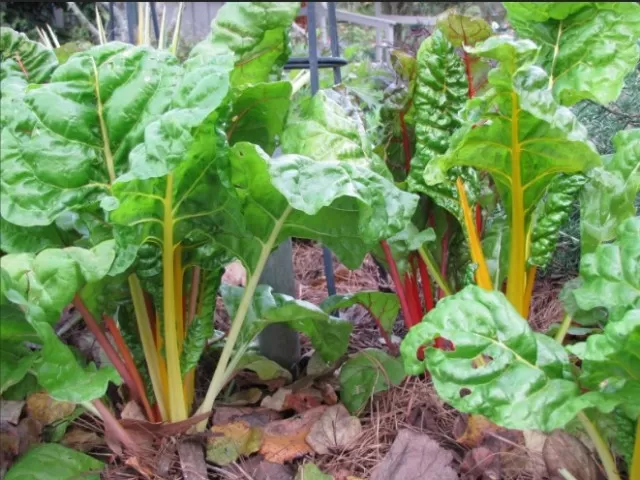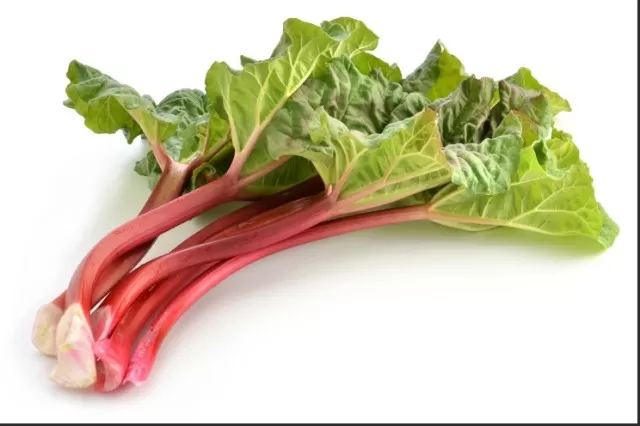Beginner-Friendly Vegetables to Grow in Your Garden (Part 2). Embarking on your first vegetable garden adventure can be both exciting and a bit daunting, but with the right approach, you can set yourself up for success.So, as you cultivate your first vegetable garden, savor the journey, and relish the delicious rewards that come to your dinner table. You might just find yourself falling in love with the art of gardening.
Swiss Chard: The Versatile and Vibrant Garden Gem

Swiss chard is truly a gardener’s delight, boasting hardiness, flavor, nutrition, and a burst of color.
This leafy green is closely related to spinach and beets, offering the versatility of substituting its leaves for either in various culinary creations.
While the white variety of Swiss chard tends to be more productive, it’s the captivating rainbow Swiss chard that steals the show with its ornamental appeal, gracing both your garden and your plate with a vibrant spectrum of hues.
This cool-weather crop is a resilient choice for your garden, suitable for planting in both spring and fall.
Whether you’re a seasoned gardener or just starting out, Swiss chard is a rewarding addition, providing both visual delight and a nutrient-rich addition to your meals.
Zucchini: The Perfect Pick for Novice Gardeners
If you’re new to gardening, zucchini should be at the top of your list.
It’s an ideal choice for beginners, primarily due to its remarkable ease of cultivation. While zucchini plants do demand a fair amount of space, they reward you with speedy growth that doesn’t test your patience.
Once the fruit sets on the zucchini plant, Be Prepared for a delightful surprise.
It seems to grow at an almost astonishing rate, maturing in a matter of hours rather than days or weeks. This rapid development means you can enjoy a bountiful zucchini harvest in no time.
So, whether you have a green thumb or you’re just dipping your toes into gardening, zucchini is a vegetable that promises a satisfying and rewarding experience, making it a fantastic choice for both new and experienced gardeners alike.
Rhubarb: The Resilient, Low-Maintenance Perennial

Rhubarb is a garden gem known for its remarkable resilience.
It’s a drought-resistant and winter-hardy plant that boasts an impressive resistance to most common pests and diseases. This hardiness makes it particularly well-suited for cooler climates, thriving in regions like the northern United States and Canada.
One of the most appealing aspects of rhubarb is its status as a perennial.
Once established, it can continue to thrive for an impressive 8 to 15 years, producing bountiful harvests of tart stalks each spring. However, it’s important to exercise patience in the first year after planting and resist the temptation to harvest anything, allowing the plant to establish strong roots.
Rhubarb’s ability to endure neglect and still produce abundantly makes it an ideal choice for gardeners of all skill levels, including those who are just starting out.
Whether you’re an experienced horticulturist or a novice, the hardy and undemanding nature of rhubarb promises a fruitful addition to your garden for many years to come.
Basil: The Flavorful and Aesthetic Herb for Your Garden
When it comes to herbs, few are as beginner-friendly and Versatile as basil.
This herb, with its delightful aroma and delicious taste, is a favorite among gardeners for good reason. It not only delights the senses with its scent and flavor but also adds a touch of beauty to your garden or landscape.
However, there’s one important caution to heed when growing basil—it’s highly sensitive to frost.
To ensure its successful growth, it’s best to wait until temperatures consistently remain above 50 degrees Fahrenheit before planting it outdoors. In regions with unpredictable weather, starting basil in containers is a wise choice.
Just remember to keep the soil consistently moist to prevent it from drying out.
Basil’s adaptability, fragrance, and culinary versatility make it an excellent addition to any garden, whether you’re a seasoned gardener or just beginning your green journey.
Plus, it’s not just a delight for your taste buds; it’s a feast for the eyes as well.
Kale: The Resilient and Versatile Green

Kale is a gardener’s dream, thanks to its resilience and adaptability.
This cold-hardy leafy green not only tolerates frost but often benefits from it, as the cold enhances its flavor. Whether you prefer it raw in salads, steamed, stir-fried, or even roasted, kale’s versatility in the kitchen makes it a favorite among home cooks.
When it comes to harvesting kale, remember this handy tip: pluck the leaves from the bottom of the plant, allowing at least four leaves to remain near the crown.
By doing so, you ensure that the plant continues to produce new leaves, providing you with a steady supply of fresh kale throughout the growing season.
Kale chips, with their delightful crunch and healthful qualities, have become a popular snack.
So, whether you’re a novice gardener or an experienced one, kale is a low-maintenance and rewarding addition to your garden, offering a bounty of culinary possibilities and nutritional benefits.
*The information is for reference only.